Green finance
Arion Bank has adopted an environment and climate policy, and in the last few years we have started to offer our customers green financial services, such as green car loans, deposits and mortgages. Arion Bank published a Green Financing Framework during the year which applies to the Bank’s funding and lending activities. The Bank has therefore pledged to use the capital it obtains on the credit markets under the Green Financing Framework for green loans to corporate and retail customers as defined in the framework. To show how this capital is used in green projects, the Bank has created a special Impact and Allocation Report.

Green financing and green lending
Banks perform a vital role in providing funding for progress, and at Arion Bank our focus is on financing projects on sustainability and green infrastructure. In mid-year the Bank issued a Green Financing Framework and subsequently issued its first green bond for €300 million. The bonds were oversubscribed and had the tightest pricing the Bank has received in recent years. In December the Bank held its inaugural green bond issue in Iceland for ISK 3,640 million.
Green loans currently represent approximately 11% of the Bank’s total loan portfolio, and the Bank aims to raise this figure to at least 20% by 2030. By setting this target the Bank aims to increase its green lending so that the annual growth rate of the green loan book is double than the growth rate of the Bank’s total loan book. This target on the ratio of green loans will be reviewed annually, taking into consideration the opportunities over the next few years for green financing and the implementation of EU taxonomy in Iceland. The Bank hopes the growth rate might be even quicker.
In 2022 we will continue to focus on sustainability with our customers and will adopt a policy concerning those sectors in which our loans have the greatest impact in terms of environmental and climate considerations. We will also begin to assess the carbon footprint of the loan portfolio using the methodology of Partnership for Carbon Accounting Financials (PCAF). Once we have obtained a clear picture of the loan portfolio’s carbon footprint, we will set ourselves a target on how to reduce the footprint by 2030 in accordance with the objectives of the Paris Climate Agreement.
In order to gain a better overview of the risk related to climate change the Bank has once again made use of the recommendations of the Task Force on Climate-related Financial Disclosures (TCFD). The section on sustainability risk in the Bank’s 2021 Pillar 3 Risk Disclosures is partly based on these guidelines and it also contains an analysis of the Bank’s loan portfolio from the point of view of climate risk. The Bank formally became a member of TCFD in February 2022.
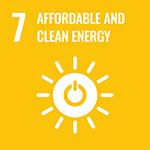
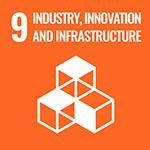
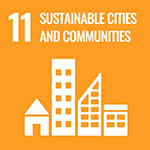
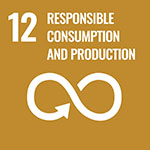
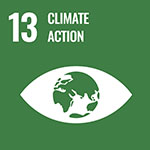
.jpg)
.jpg)
Green Financing Framework
Arion Bank’s Green Financing Framework is a key milestone on the Bank’s journey with its customers, both corporate and retail. The Framework has already been applied in the issue of green bonds and raising green deposits and also to expand the Bank’s range of environmentally friendly products. During the year the Bank added green corporate loans to its offering. Projects eligible for such loans include energy savings, the transition to green energy in transportation, environmentally certified housing, sustainable fisheries, emission controls and renewable energy.
In order for a project to be eligible for green loans it needs to meet the requirements set out in the Green Financing Framework. Companies which meet the criteria for green lending undergo special examination and generally pay lower financing costs. More stringent requirements are made in terms of their performance in non-financial areas of the business and they have stricter disclosure requirements for non-financial indicators.
In connection with the Green Financing Framework, Arion Bank engaged the engineering firm Mannvit to analyze the Bank’s mortgage portfolio and to propose what could be categorized as a green mortgage in Iceland. It represents the first report of its kind in Iceland and it is a vital contribution to the discussion on green buildings and their future on the domestic property market. Approximately 13% of residential housing which Arion Bank has financed matches Arion Bank and Mannvit’s definition of green residential housing and environmentally certified housing.
The Green Financing Framework was assessed by the Norwegian ratings agency Cicero, which rated the framework as Medium Green and rated governance as Good. Deutsche Bank advised on the framework. The Green Financing Framework is based on the latest Green Bond Principles of the International Capital Market Association, ICMA. It also draws on the EU Taxonomy and the UN Sustainable Development Goals.
Arion Bank's Green Financial Framework
Methodology Paper by Mannvit - Green Residential Buildings
Opinion from Cicero
Green deposits incorporated into Arion Bank’s Green Financing Framework
In mid-2020 Arion Bank announced the launch of a new green deposit account, called Green Deposits, the first Icelandic bank to offer such an account. At the same time the Bank launched a special financing framework for green deposits. Money deposited in Green Deposits are only allocated to projects which are intended to have a positive environmental impact. Green Deposits is a savings account designed for individuals, NGOs and companies wanting to contribute towards a greener future. The account is a non-indexed, demand account, which means savers can withdraw their money whenever they want.
The response to Green Deposits has exceeded all expectations and by the end of 2021 more than ISK 8 billion had been deposited into the account. Initially funds in Green Deposits were used solely to finance green car loans, supporting the transition to sustainable energy in transport. Due to the popularity of Green Deposits the Bank broadened the scope of the account at the beginning of 2021 and incorporated projects involving emission controls and more effective waste management. Green car loans are growing in popularity and the proportion of green loans in the Bank’s car loan portfolio, i.e. loans to buy electric cars and cars which are partly powered by renewable energy, increased from 17% to 30% during the year.
At the end of the year Green Deposits were incorporated into the Green Financing Framework and the separate green deposits framework was discontinued.
Impact and Allocation Report 2021
Arion Bank has published an Impact and Allocation Report in respect of the Green Financing Framework for 2021. The sustainability team at EY in Iceland advised on the report and also carried out the calculations of the environmental and climate impact of green projects. The report specifies the allocation of funds raised through green bond issues and green deposits in 2021, and there is also a section on the positive environment and climate impact of green projects at Arion Bank. Deloitte has provided limited assurance that Arion Bank’s allocation of net proceeds from Green Financing Instruments are used to finance loans that meet the criteria of the Bank’s Green Financing Framework for the year 2021.
Total allocation of
green financing

ISK 129.9
billion
Emissions of greenhouse gases avoided
.png)
12,680
tCO2E
Estimated greenhouse gases avoided in 2021 due to green financing
Annual emissions of greenhouse gases avoided with green financing corresponds to
%20(1).png)
36,228
return flight tickets from Copenhagen
Responsible fund management
The role of Stefnir, a subsidiary of Arion Bank, is to manage the financial assets of its clients as best serves their interests in the short and long term. The company has pioneered the development of new funds and investment options over the last decade and is a market leader in terms of implementing good corporate governance and ESG strategy.
Responsible and diverse investment options and thorough disclosure of information are central to the corporate social responsibility to which Stefnir is committed. By paying due attention to environmental and social issues and good corporate governance the company believes it can have a positive influence on our society, to the benefit of fund members and other stakeholders.
Professional and disciplined working practices are integral to the company’s ethos. Further information on responsible investment at Stefnir can be found here.
Stefnir - Scandinavian Fund - ESG
The fund is managed by applying the methodology of responsible investment. Investment decisions are guided by those UN Sustainable Developments Goals which align well with the fund’s investment strategy.
These goals are: good health and well-being, gender equality, affordable and clean energy, innovation and infrastructure, responsible consumption and production, and climate action.
Stefnir - Green Selection
Stefnir – Green Selection is a mixed UCITS which primarily invests in domestic and international equities and corporate bonds issued by companies which are guided by ESG factors in their operations.
Investments are made in accordance with Stefnir hf.’s policy on responsible investment.
Stefnir - Sustainable Fixed Income Fund
The fund’s investments seek to generate returns on a portfolio of domestic and international bonds issued by governments, companies, financial institutions, public authorities or other companies with the goal of sustainability.
Environmental and climate targets
We have adopted an ambitious environment and climate policy with targets for the next few years. The targets concern both the Bank’s operations and external impacts with respect to lending and investment. Further information on the policy and targets can be found here.
Percentage of green loans to retail and corporate customers in 2030
.png)
20%
Reviewed annually with a view to opportunities for green financing
In 2022 the Bank‘s loan portfolio will be assessed using PCAF methodology
Objective is to reduce emissions from loan portfolio in line with Paris Climate Agreement
In 2022 we are adopting a policy on lending to those sectors

.jpg)
.png)
.png)
.png)